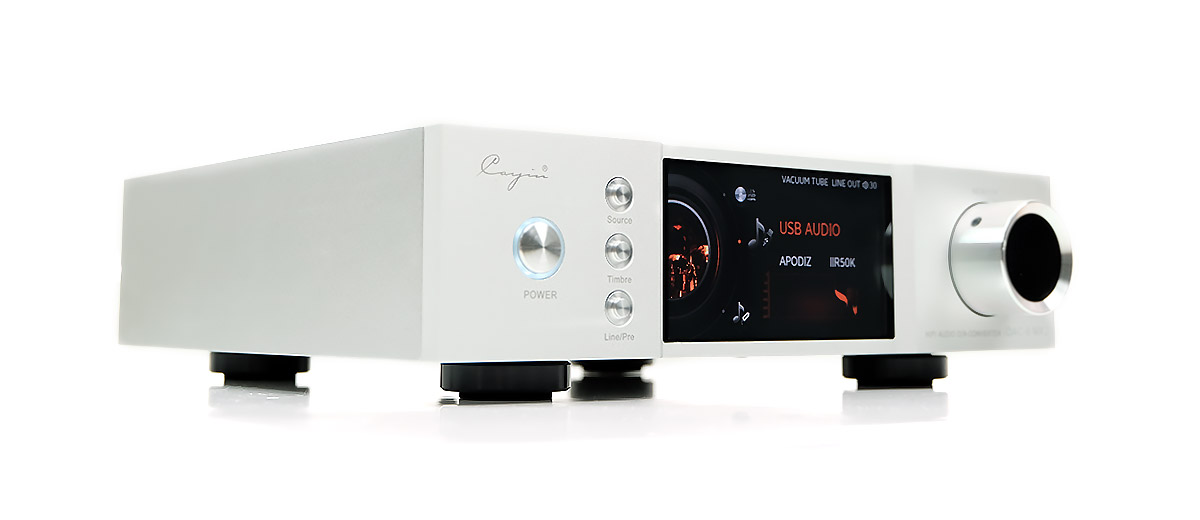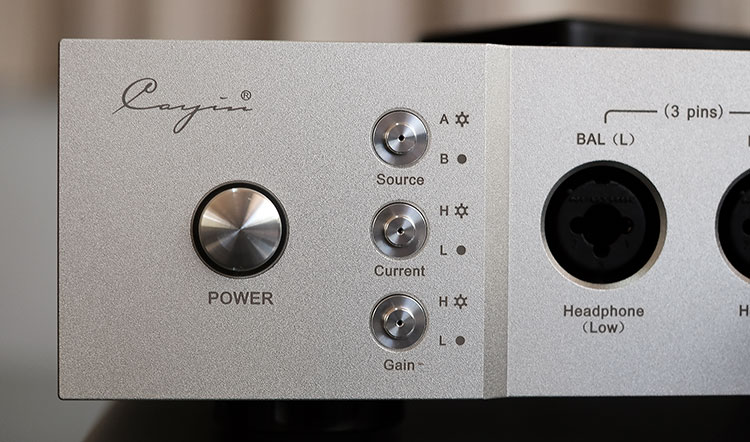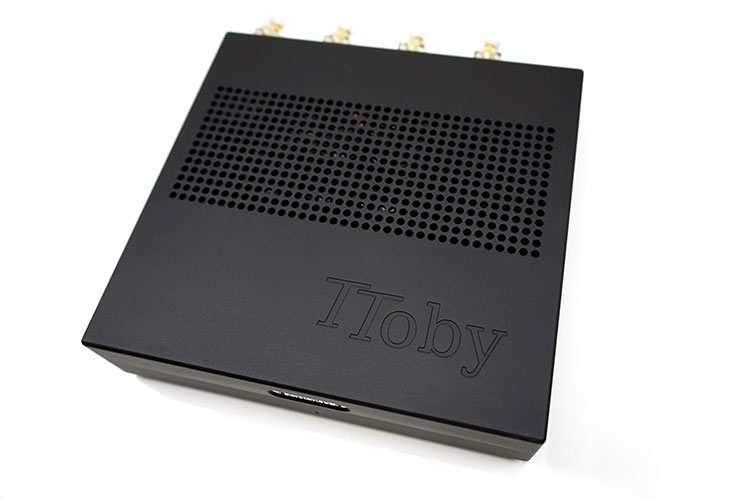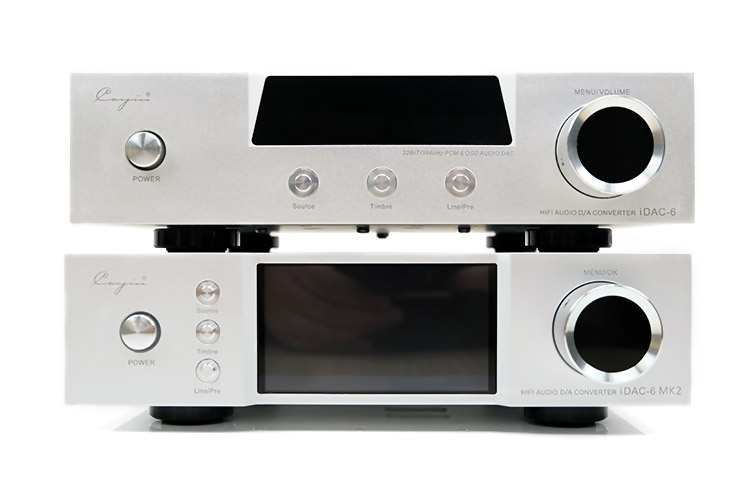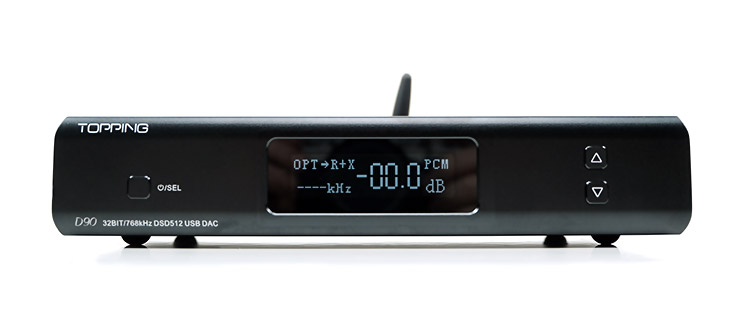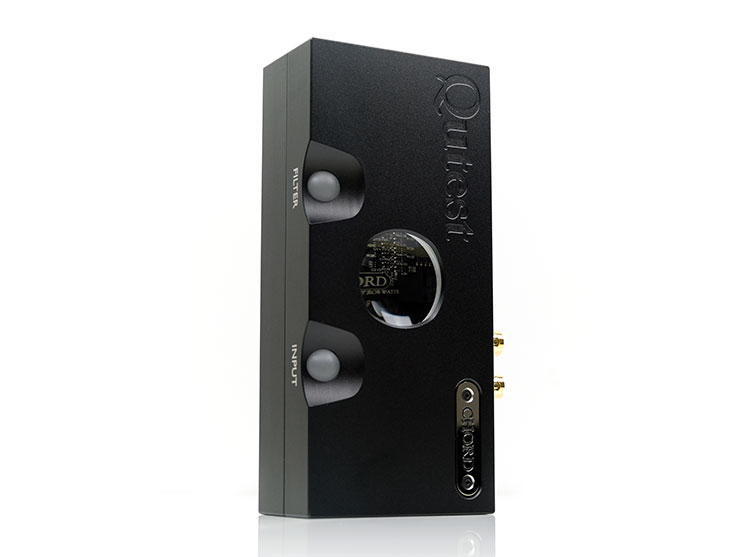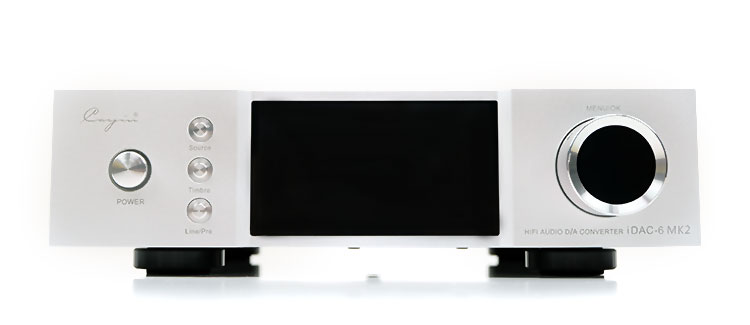Sound Impressions
Summary
This is the 3rd DAC unit using the new Sabre PRO chipsets that I have reviewed in the last few years. By PRO I mean either an ES9028PRO or ES9038PRO system setup primarily to interface as a DAC. That includes Oppo’s now discontinued Sonica and NuPrime’s CDP-9.
Certainly, the new designs are nowhere near as harsh as the older ES9018 DAC timbre which I am told was not the easiest to engineer. It is one of the reasons why earlier DAC offerings, including the iDAC-6 MK1, went with AKM and the popular AK4490. They just sounded more engaging and also a bit easier to implement.
However, the iDAC-6 MK2 is by far the first Sabre PRO DAC that I find the most removed from that traditional ‘Sabre sound”. A popular description that is normally described as being clean sounding and very neutral but also, at times, quite dry.
I should not be surprised really given I got a taste of what Cayin likes to do with Sabre DACs in our E01 motherboard review earlier this year.
It is not the impressive detail coming to the fore with the iDAC-6 MK2 that surprised me the most but rather the timbre. The iDAC-2 is full-sounding, rich in texture, smooth in delivery yet impressively dynamic sounding.
If you are having problems releasing your hands from the punchy fun sound of the iDAC-6 MK1 and are worried that moving to Sabre means cold or boring, think again.
One could easily mistake the iHA-6/iDAC-6 transistor sound for a quasi-SET amplifier rather than a dry solid-state amp Sabre DAC combo. What more so that opinion when switching from transistor to vacuum via the timbre switch?
Solid-State Timbre
This timbre selection is where I drew the summarized strapline for the sound description summary of the iDAC-6 MK2. Gone is that mid-bass punchy/lively contrast of the MK1 and in comes a much more planted but smoother coherent-sounding presentation.
The MK2 does take a little edge from that MK1 mid-bass hump so it is not quite as aggressive. Instead, the MK2 elevates the sub-bass presence that bit more. It sounds infinitely deeper with a blacker background as a result. This is a more powerful sounding DAC, especially when paired with amps like the iHA-6 and Violectrics’ ‘heavy-handed’ V281.
More than that, the MK2 fills in the lower-mids with a much smoother and more coherent bass-to-lower mids transition. That warmth and body deliver a lovely even-harmonic richness to instrument notes without allowing them to get overly rounded.
One important note to mention on the MK2 treble timbre. That old AK4490 tendency to deliver a hard-edged attack on the solid-state sound is very much gone with the ES9028PRO implementation on this DAC.
I do, however, think the level of note decay is just a shade longer than the likes of the Chord Electronics Qutest so not quite as much separation, particularly on vocals. In part, that comes from the tweaked treble timbre on the MK2 that, whilst forward and clear, is more liquid sounding and bit on the sweet side when tested with the iHA-6.
Vacuum Timbre
The vacuum timbre does not bring in wholesale changes but in keeping with a SET-type sound it brings in a slightly more relaxed signature.
That slight sweetness in the transistor treble is amplified right across the mids timbre sounding almost euphonic in its delivery. What is very different though it the bass amplitude and punch. Compared to the transistor side it is a little lighter, not as heavy-handed with a slower pace and doubtless an increase in even-harmonic distortion.
The warmth is still there for sure, just not quite the energetic punch and zip fo the transistor sound. This allows the mids to come to the fore a bit more and they do sound marginally more spacious as a result though with a shade more note decay.
Balanced
If anything, the balanced output of the MK2 amplifies the vividness of the transistor performance over the vacuum timbre mode. With the iHA-6 connected, the balanced transistor mode sounded even more precise with a fast transient response and a slightly shorter decay.
For me, the vacuum mode sounds a shade mute and lacks the ‘drive’ of the transistor mode with the balanced output if you are listening to modern pop and rock. I tend to veer to vacuum mode for more hi-fidelity stuff like jazz female vocals that draw a bit of chestiness.
When female vocals pitch lower they tend to need a bit more texture to fill out and the vacuum timbre mode is more suited than the transistor side. The solid-state balanced output does not offer quite as much subtle character and warmth for that type of vocal to sound as inviting as it could.
Conversely, I found the transistor balanced ‘drive’ to be more expressive sounding on lower-mids male vocals. That little uptick on the odd-harmonic balance created some nice contrast in lazy Tom Wait’s style whispering vocals that didn’t stand out as much on the vacuum mode.
Synergy
Headphone Amps
No question the iDAC-6 MK2 has the musicality and sweetness to pair fantastically well with the iHA-6 and in my opinion a superior choice to the MK1. I always felt the iHA-6 top-end was just a little on the airy or clean side but not so much with the iDAC-6 MK2 as the source.
The MK2 did a nice job smoothing out the treble and introducing a more natural tone to the iHA-6 which in turn opens it up a bit more to exacting headphones such as the Diana Phi.
I would also recommend opting for the pre-out over the line-out, especially with easier-to-drive headphones such as the Meze Empyrean. Having the ability to control the level of current and work on the balanced output of amps such as the Violectric V281 and the iHA-6 was much more satisfying.
I would also recommend the IDAC-6 MK2 for solid-state electrostatic amp systems such as the Hifman Jade II. You lose nothing in terms of that expansive clean sound the Jade II headphones can deliver but prevent the amp side from sounding too clean or sterile.
With the MK1, I found the Hifiman setup quite ‘hard’ sounding for the upper mids and perhaps a little shouty also regardless of timbre choice.
The MK2 vacuum timbre option was quite a different proposition. It sounded much more balanced, coherent, and less edgy to my ear. The timbre was a shade sweeter and richer throughout providing a more enjoyable vocal performance, particularly female vocals.
Power Amps
Personally, I am no longer a HiFi guy though I do have a small B&W speaker and Chord Electronics TToby setup upstairs for home ents usage. You definitely need that pre-out analog volume control in this context since the TToby has no individual current control.
The TToby is very dynamic sounding with excellent power handling so it poses no issues driving a set of modest B&W DM604 S2 speakers. However, paired with something like the NuPrime CDP-9 is not quite how I like my speakers to sound.
The 604’s are not as ‘bassy’ as the larger 603s which is fine for the small room setup we have but with the CDP-9 ES9028PRO infused pre-out, it sounds too clean and analytical to my ear. The IDAC-6 MK2 richens the sound up and delivers a more natural and pleasing sound. It also fills up the low-end on the speakers a bit better and sounds the more dynamic of the two pre-amps.
Burson’s Fun & Bang combo can also sound quite natural with their warm and midrange focused V6 Classic opamps inserted into both. However, they tend to sound a little harsher than the iDAC-6 MK2 and the dynamic range is not as convincing. They also lack a lot of the iDAC-6 MK2 features such as that 18V balanced output, timbre control, and filtering.
Select Comparisons
(All comparisons were done with strict transport and output parameters, i.e. same source and same headphone amplifier. This included Cayin’s IHA-6 and iDAP-6, as well as Chord Electronics Hugo M Scaler, where we reference any upsampling differences).
Cayin iDAC-6 MK1
$699 (Discontinued)
Technical
I have covered a lot of going already in the main review regarding the differences from a technical and physical standpoint between the MK1 and MK2. Suffice to say here is the summarized version for those thinking of an upgrade.
The MK1 uses a much older dual AK4490 chipset implementation compared to the ES9028PRO inside the MK2. The oscillation has gone from a dual chipset to a triple chipset with 100MHz now covered for hi-res audio. Decoding on the MK2 is much higher at DSD512 and PCM 32BIT/768kHz compared to just 32BIT/352kHz and DSD128 on the MK1.
The buffer implementation has not changed meaning you can select solid-state on the pre-out instead of the older fixed tube buffer ‘always on’ status for the MK1. This will increase the tube life on the MK2 and give you a timbre choice on balanced and unbalanced outputs on the MK2.
The pre-out on the MK2 has a massive upgrade with better voltage parameters and switching from digital to analog volume control compared to the MK1. You can now benefit from a 7V max output unbalanced and up to 13V balanced compared to the fixed 2.2V and 4.4V of the MK1. This makes it a better bet for retaining useful dynamic range when connected to power amps than the Mk1.
I/O
The LCD panel also had a positive overhaul with the more intuitive HiBy OS instead of the dot-line display of the older MK1. This should make choosing menu options, sources and filters a lot easier on the MK2.
To the rear, the MK2 has an additional coaxial BNC input as well as adding an I²S port to allow for superior integration with the iDAP-6 as well as better 3rd party support, particularly upsampling source compatibility.
Tuning
The difference in both dynamic range and tonal bias is quite easy to make out between the MK1 and MK2 using the iHA-6/iDAP-6 combo paired with the Meze Empyrean. The MK1 still has that punchy musical sound that I enjoyed from the original review but with the MK2 it now sounds fuller and more expansive.
No question the dynamic range has taken a marked step forward on the MK2. The individual low-end note hits on the iHA-6 with the Empyrean sound much tighter and beautifully layered in comparison to the slightly one-dimensional punch and texture of the MK1.
It is not just the low-end that gets a bit ‘juicier’, the mids also get a lift. On the MK1 the vocals had a lovely push to the fore that I found endearing as a vocal love but at the cost of some lower-midrange presence.
The MK2 fleshes out the bass to mids transition on the iHA-6 a lot better. As a result, it leaves the MK1 sounding a little hollow sounding in the mids and slightly unbalanced sounding. Instruments on the MK2 have a better presence, a fuller sound, and a more accurate timbre also.
The MK2 treble also sounds much more coherent. The MK1 has a slight hardness to the treble which can seem exciting and energetic but it also creates an edgy or hard overtone in percussion and some higher pitching vocals. The MK2 is more liquid in its treble delivery so it sounds a little lighter perhaps but far more balanced and detailed sounding.
I would still say Cayin has implemented the ES9028PRo to sound on the natural side of neutral. It does not sound as brash or contrasty as the dual AK4490 MK1 signature. Instead, it is very refined, more coherent and accurate performance.
Topping D90
$699 (Non-MQA version)
The D90 is just fresh out of the box so our in-depth review is not out yet. We did get enough initial time with it to bring you some brief comparisons.
DAC
This is Topping’s flagship pure DAC but a little cheaper at $699. That might constitute excellent value given they have thrown in a single AKM AK4499 flagship DAC chipset into the D90.
Whilst I am very reluctant to debate if it is a superior performing chipset to the ES9028PRO due to differing implementations, the standard comparison seems to be the ES9038PRO. That is a bit higher than the IDAC-6 MK2 ES9028PRO but that can be a dangerously misleading headline.
Clock
For one, whilst both use Femtosecond clocks, the MK2 has a triple Crystal oscillator setup covering a wider sample rate as opposed to just a double Accusilicon chipset inside the D90.
The key 100mHz sample rate is missing in the D90 performance parameter which covers more hi-res decoding rates from 352.8kHz to 768kHz as well as DSD512. I am presuming Topping bet a bt more on the likelihood of native tracks not having that high of a sample rate but if you have an upsampling source transport like a NuPrime CDP-9 or Chord Electronics M Scaler that might be relevant.
I/V conversion
The buffer system on the D90 is solid-state only. Going beyond the DAC, the iDAC-6 MK2 offers more of a timbre choice by also implementing a tube buffer for balanced and unbalanced outputs.
For the solid-state side, the MK2 uses a mix of OPA134UA and OPA1662 blocks for I/V conversion whereas the D90 uses a quad OPA1612. From the engineering sheets, the OPA1662 tends to perform a bit better for distortion under load compared to the OPA1612.
Having said that, the D90 specified SNR of 123dB unbalanced and 127dB balanced (A-weighted at 1kHz) is impressive on paper compared to the MK2’s 115dB and 122dB under similar loaded figures for unbalanced and balanced.
Shared I/O
The iDAC-6 MK2 and D90 do share plenty of I/O features including a balanced and unbalanced line and pre-out with dual RCA and XLR 3-pin to the rear. Both have the I²S ports with similar DSD512 and 32BIT/768kHz decoding rates and both offer USB, AES/EBU, coaxial RCA, and optical inputs.
Where they diverge is the D90’s inclusion of Bluetooth wireless via an antenna receiver whereas the MK2 opts for Coaxial BNC compatibility. There is no need for the iDAC-6 MK2 to go wireless when the iDAP-6 does it all and more comprehensively but for those on a tighter budget, the ability to receive up to 24BIT/96kHz LDAC is a plus.
Design
No question the MK2 is a superior design and build quality with its very solid CNC machined and sandblasted chassis. Certainly, the D90 build feels solid but the machining has a cheaper feel to it. The D90 front panel lacks that analog volume control and intuitive HiBy GUI for operational control.
The GUI on the D90 is more akin to the iDAC-6 MK1 simpler LCD and a bit harder to use though it does come with a remote control which I would have loved to have seen come with the MK2.
Performance
We will go into the D90 sound signature in a bit more detail in the main review so, for now, you can take this as some initial impressions. Overall, the D90 takes a different direction when comparing the two from the same iHA-6/iDAP-6 and Meze Empyrean combo.
The D90 sounds the softer of the two in the upper mids and treble and the more neutral of the two DACs in the bass and lower mids. Both have excellent black backgrounds but the iDAC-6 MK2 richer low-end sounds more powerful and deeper which in turn creates a better sense of space. The low-end of the D90 is punchy but not as rich and layered sounding as the iDAC-6 MK2 so it sounds a shade flatter on the iHA-6.
The D90 neutral low-end and softer treble adds a bit more ‘midrange emphasis to the presentation. However, upper mids percussion sounds more muted though quite agreeable on the likes of the iHA-6. Not that the iDAC-6 has bright upper-mids but rather it has more presence, definition, and body than the D90.
For me, the iHA-6 top-end can sound quite clean at times in its own right. The iDAC-6 MK2 ES9028PRO chip seems better tuned to adapt to the i-HA-6 solid-state sound, especially with the vacuum timbre adding a bit more ‘pleasing low-end distortion’ and warmth. The D90 has that modern AKM DAC top-end ‘fade’ I hear in the Yulong D10’s DAC though not as extreme.
Chord Qutest
£1195
DAC
The price point is a shade higher but the way the Qutest works is a little different from the iDAC-6. For me, the Qutest is much more focused pure DAC whereas the range of features on the iDAC-6 MK2 are broader.
For sure, the DAC inside the Qutest is stellar. This is an in-house design ditching the traditional delta-sigma approach that is inside the MK2. I am presuming the ES9028PRO has a 4k FIR tap count and is much lower than the Qutest’s FPGA Xilinx Artix 7 chipset which can deliver up to 49,152 WTA taps using a 10 element Pulse Array design.
Decoding rates, however, are the same on both DACs at PCM up to 32BIT/768kHz and DSD512 via USB and 24BIT/192kHz via optical. The coaxial rates only differ due if the dual BNC usage is activated on the Qutest. Otherwise, they have the same decoding capability as each other.
Analog
Beyond that, the user scenario is a little different. For a start, the Qutest only offers an unbalanced line-out and no balanced or pre-out options. However, that is a variable rather than fixed line-out with 3 selectable choices, 1V, 2V, and 3V. Most will find a happy home with 2V. The iDAC-6 MK2 offers unbalanced and balanced but with a more limited fixed voltage of 2.2V for unbalanced and 4.4V for balanced.
It is also a little difficult to draw a comparison between these two DACs on the relative levels of dynamic range and SNR. Both stated specs are rightly weighted, however, the voltage weighting is different.
The iDAC-6 MK2 line out is fixed at 2.2V with a max THD+N rating of ≤0.003%, (@1kHz, Fs=192kHz, A-weighted), on the solid-state filter. The Qutest is measured at its maximum setting of 3V and has a rating of THD+N of <0.0001% 1kHz. I have to presume from these stats that a lower 2.2V rating for the Qutest would be superior but that is an assumption.
For SNR, the numbers for the iDAC-6 MK2 are unbalanced ≥115dB (@1kHz, A-weighted) but up to 121dB balanced. The Qutest spec sheet suggests 117dB unbalanced which is a little bit better but also lower compared to the iDAC-6 MK2’s balanced output.
Digital
Other differences include the inclusion of an I²S connection option on the iDAC-6 MK2, coaxial RCA, AES/EBU, and 2 optical inputs. The Qutest is a bit more spartan with just one optical and no RCA coaxial, opting instead for dual BNC support.
However, that dual BNC is a killer feature as it allows a full hook-up with the Hugo M Scaler and upsampling rates of up to 768kHz. The iDAC-6 has one coaxial BNC so it can connect to an M Scaler but that lack of additional BNC socket means it is limited to 352kHz rates for upsampling.
Interface
I give props for Chord making everything fairly accessible on their orb control interface to the front but it is not as intuitive as the iDAC-6 MK2 HiBy GUI LCD screen, not by a long shot. If you enjoy reading a manual from head to toe then the Qutest orb color system will give you no issues, for everyone else, the iDAC-6 MK2 GUI is the way to go.
The filter system on the Qutest I do find to be more persuasive switching from neutral to warm than the ES9028PRO PCM and DSD filters but your mileage can vary on this one. On the flip side, the timbre control from the 4 tubes buffer to solid-state on the iDAC-6 is more of a contrast in tone than any filter can bring in but be warned the level of distortion increases as a result.
Performance
There are some timbral differences here when pairing with the iHA-6/iDAP-6 and Empyrean setup. The Qutest has a bit more sub-bass dynamic impact but overall retains a cooler timbre than the iDAC-6 MK2. The MK2 actually sounds fuller on the low-end but slightly softer in impact.
The fullness is also present in the lower mids and vocal timbre. The Qutest has this uptick in treble intensity that its close sibling, the Hugo 2 does not have. So, it sounds more energetic but not a bright sound per se, but rather a brighter sound. It is also brighter than the MK2 treble which has some good presence but defers to a slightly lighter and more liquid overtone.
That affects the overall timbre on both when combined with the iHA-6. The MK2 tuning is more even-harmonic, richer and euphonic in its delivery compared to the tighter, cleaner Qutest sound.
You could make a case of the Qutest also benefiting from a seemingly superior level of instrumental separation and it does seem to deliver an airier presentation. However, some of that might be also be related to the greater treble infusion into the timbre to give it a crisper edge to the notes on the iHA-6. On the iDAC-6, the decay just seems a shade longer.
Our Verdict
Coming from the iDAC-6 MK1 to the MK2 is quite a leap in performance. Never mind the funky GUI LCD which is more of a user bonus. The MK2 is more of a testimony to Cayin’s engineering skills in terms of how they can deliver a sound signature that they really want, irrespective of the DAC they choose to work with.
Traditionally, I would have expected this smoother sound to be an AKM sound but coming from the E01 motherboard’s delightful interpretation of the ES9028PRO I should not be surprised.
Implementation is key they say, but rarely at this price point is it as expressively demonstrated as it is with the iDAC-6 MK2. This is not a neutral sound, it is not analytical, it is natural, slightly weighted and very listenable. In doing so, it has also changed the character of the iHA-6 for the better in that i-Series stack. That almost sounds like a 2 for 1 deal, doesn’t it?
Cayin iDAC-6 MK2 Specifications
| Hardware Description | DAC Chipset | ES9028PRO (ESS)×1 | ||
| No. of Op-Amp | 12 | |||
| Screen | 3.95″ 640×360 16M Colors AMOLED | |||
| Vacuum Tube | RAC output | 6H16B×2 | ||
| XLR output | 6H16B×2 | |||
| Physical Description | Dimension | 240*252*69mm(L×W×H) | ||
| Weight | ~3.6kg | |||
| Maximum Power Consumption | 30W | |||
Digital Inputs |
||||
| USB AUDIO | Format | PCM | 16Bit-32Bit, 44.1kHz-768kHz | |
| DSD | DSD64-DSD512 native, DoP256 | |||
| System Supported | Windows | Supported, device drivers required | ||
| MAC OSx | Supported | |||
| Android | Not supported | |||
| iOS | Supported through Camera Connection Kit | |||
| Mode of Operation | Asynchronous USB Audio 2.0 Class | |||
| DSD support | Support Native, DoP and D2P mode | |||
| USB Audio Device Driver | Cayin USB Audio Driver V4.47.0 or above | |||
| I2S | Format | PCM | 16Bit-32Bit, 44.1kHz-768kHz | |
| DSD | DSD64-DSD512 | |||
| Connector | HDMI Type-A | |||
| AES/EBU | Format | PCM | 16Bit-24Bit, 44.1kHz-192kHz | |
| DSD | DSD64 (DoP only) | |||
| Input Impedance | 110Ω | |||
| Connector | XLR female | |||
| COAXIAL -BNC |
Format | PCM | 16Bit-24Bit, 44.1kHz-192kHz | |
| DSD | DSD64 (DoP only) | |||
| Input Level | 0.5V@75Ω | |||
| Input Impedance | 75Ω | |||
| Connector | BNC | |||
| COAXIAL -RCA |
Format | PCM | 16Bit-24Bit, 44.1kHz-192kHz | |
| DSD | DSD64 (DoP only) | |||
| Input Level | 0.5V@75Ω | |||
| Input Impedance | 75Ω | |||
| Connector | RCA | |||
| OPTICAL | Format | PCM | 16Bit-24Bit, 44.1kHz-176.4kHz | |
| DSD | DSD64 (DoP only) | |||
| Connector | TOSLINK | |||
Analog Output (Line Out) |
||||
| Single-Ended (RCA) | Solid State | Output level | 2.2V+2.2V (47kΩ loaded) | |
| Frequency Response | 20-50kHz (±0.5dB, Fs=192kHz) | |||
| THD+N | ≤0.003% (@1kHz, Fs=192kHz, A-weighted) | |||
| Dynamic Range | ≥115dB (@1kHz, A-weighted) | |||
| S/N | ≥115dB (@1kHz, A-weighted) | |||
| Channel Seperation | ≥92dB | |||
| Output Impedance | ~10Ω | |||
| Vacuum Tube | Output level | 2.2V+2.2V (47kΩ loaded) | ||
| Frequency Response | 20-50kHz (±0.5dB, Fs=192kHz) | |||
| THD+N | ≤0.8% (@1kHz, Fs=192kHz) | |||
| Dynamic Range | ≥110dB (@1kHz, A-weighted) | |||
| S/N | ≥110dB (@1kHz, A-weighted) | |||
| Channel Seperation | ≥92dB | |||
| Output Impedance | ~300Ω | |||
| Balanced (XLR) | Solid State | Output level | 4.4V+4.4V (47kΩ loaded) | |
| Frequency Response | 20-50kHz (±0.5dB, Fs=192kHz) | |||
| THD+N | ≤0.003% (@1kHz, Fs=192kHz, A-weighted) | |||
| Dynamic Range | ≥121dB (@1kHz, A-weighted) | |||
| S/N | ≥121dB (@1kHz, A-weighted) | |||
| Channel Seperation | ≥92dB | |||
| Output Impedance | ~20Ω | |||
| Vacuum Tube | Output level | 4.4V+4.4V (47kΩ loaded) | ||
| Frequency Response | 20-50kHz (±0.5dB, Fs=192kHz) | |||
| THD+N | ≤0.8% (@1kHz, Fs=192kHz, A-weighted) | |||
| Dynamic Range | ≥120dB (@1kHz, A-weighted) | |||
| S/N | ≥120dB (@1kHz, A-weighted) | |||
| Channel Seperation | ≥92dB | |||
| Output Impedance | ~1000Ω | |||
Analogue Output (Pre Out) |
||||
| Single-Ended (RCA) | Solid State | Output level | 7V+7V (47kΩ loaded, maximum) | |
| Frequency Response | 20-50kHz (±0.5dB, Fs=192kHz) | |||
| THD+N | ≤0.002% (@1kHz, Fs=192kHz, A-weighted, Vol = 81) | |||
| Dynamic Range | ≥122dB (@1kHz, A-weighted) | |||
| S/N | ≥122dB (@1kHz, A-weighted) | |||
| Channel Seperation | ≥92dB | |||
| Output Impedance | 10Ω (OUTPUT: 2.3V, 47kΩ loaded) | |||
| Vacuum Tube | Output level | 6V+6V (47kΩ loaded, maximum) | ||
| Frequency Response | 20-50kHz (±0.5dB, Fs=192kHz) | |||
| THD+N | ≤0.8% (@1kHz, Fs=192kHz, A-weighted, Vol = 81) | |||
| Dynamic Range | ≥115dB (@1kHz, A-weighted) | |||
| S/N | ≥115dB (@1kHz, A-weighted) | |||
| Channel Seperation | ≥92dB | |||
| Output Impedance | ~300Ω (OUTPUT: 2.2V, 47kΩ loaded) | |||
| Balanced (XLR) | Solid State | Output level | 13V+13V (47kΩ loaded, maximum) | |
| Frequency Response | 20-50kHz (±0.5dB, Fs=192kHz) | |||
| THD+N | ≤0.002% (@1kHz, Fs=192kHz, A-weighted, Vol = 81) | |||
| Dynamic Range | ≥122dB (@1kHz, A-weighted) | |||
| S/N | ≥122dB (@1kHz, A-weighted) | |||
| Channel Seperation | ≥92dB | |||
| Output Impedance | ~20Ω (OUTPUT: 4.5V, 47kΩ loaded) | |||
| Vacuum Tube | Output level | 10V+10V (47kΩ loaded, maximum) | ||
| Frequency Response | 20-50kHz (±0.5dB, Fs=192kHz) | |||
| THD+N | ≤0.8% (@1kHz, Fs=192kHz, A-weighted, Vol = 81) | |||
| Dynamic Range | ≥121dB (@1kHz, A-weighted) | |||
| S/N | ≥121dB (@1kHz, A-weighted) | |||
| Channel Seperation | ≥92dB | |||
| Output Impedance | ~1000Ω (OUTPUT: 4.6V, 47kΩ loaded) | |||

